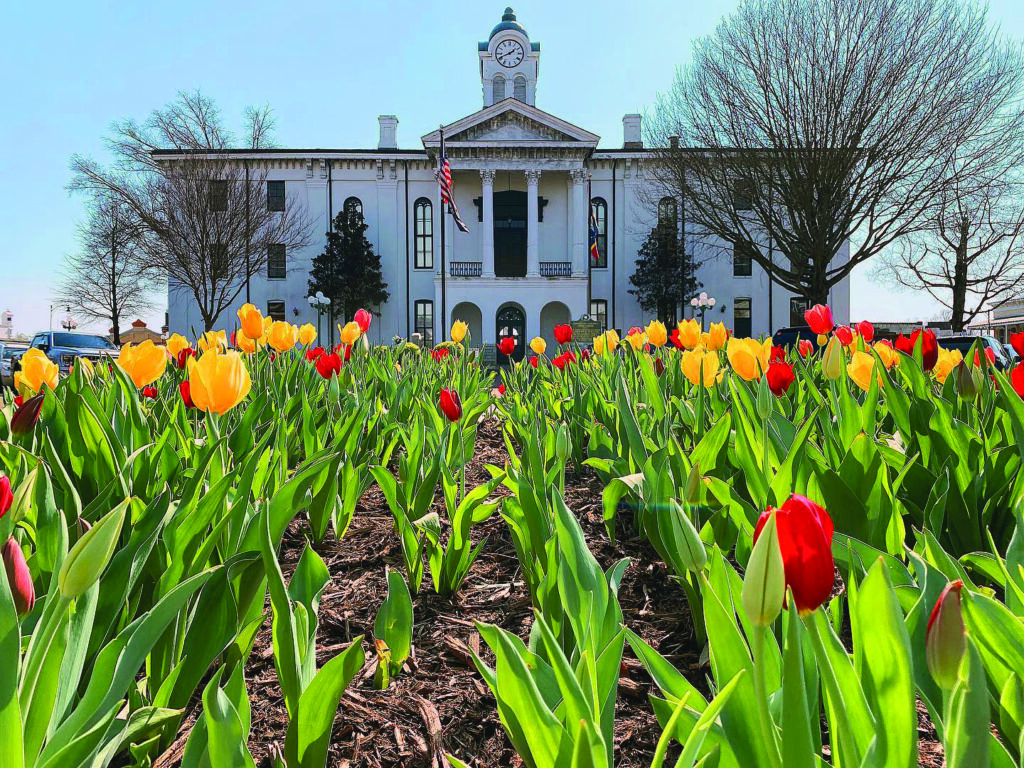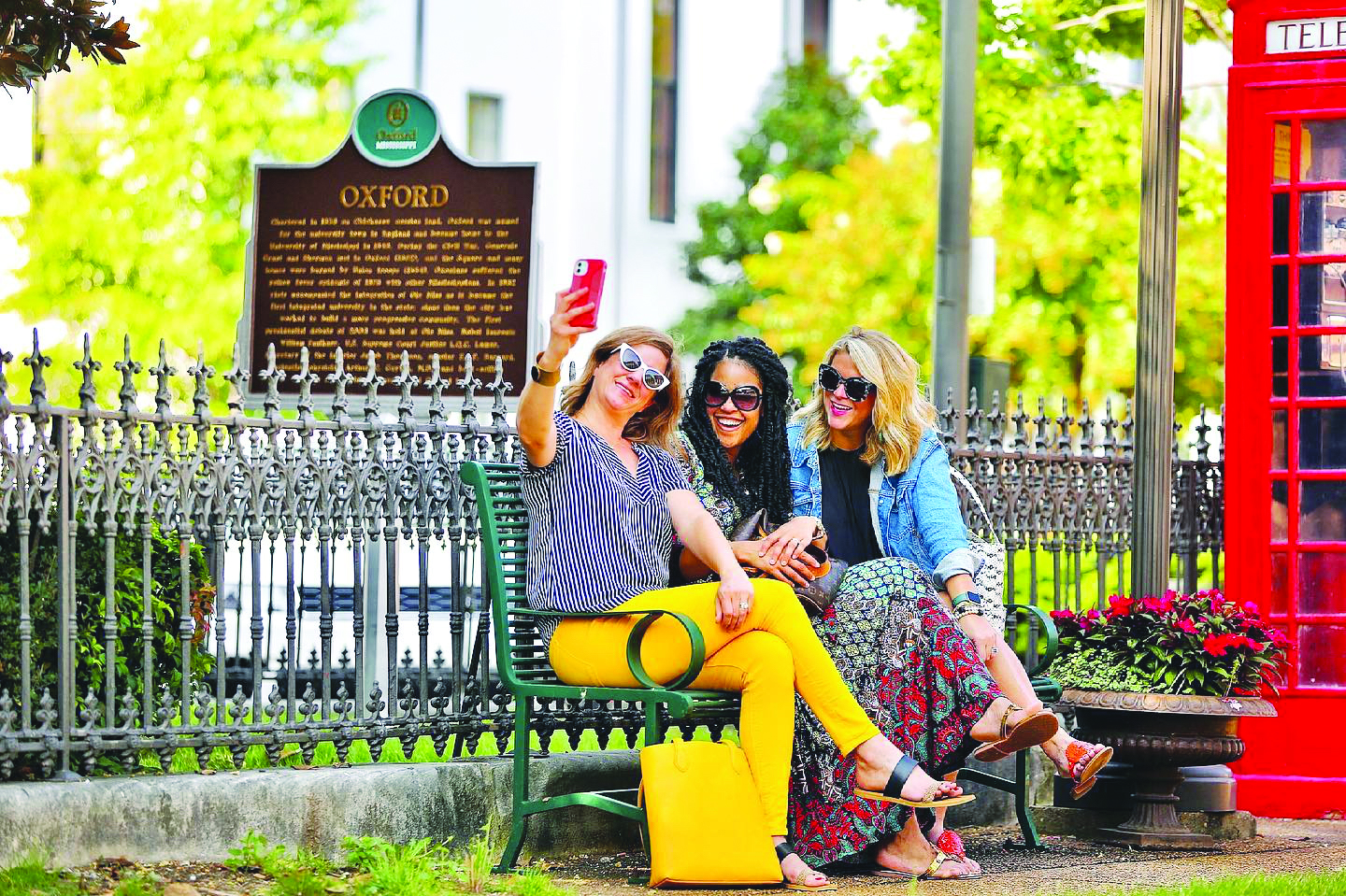A diverse and knowledgeable group has made plans to enhance tourism
When most people think of the economy of Oxford, the first thing that comes to mind is the financial impact of the state’s flagship university, the University of Mississippi. Research has indicated Ole Miss has an annual economic impact of about $3 billion. But tourism, in what is considered one of the state’s most charming cities, is also a key part of the economy, and a diverse group has come together to help develop a roadmap to enhance tourism.

“We just completed a strategic five-year plan after much work,” said Oxford Tourism Council Chair Dr. Linda Spargo. “About one-third of our economy is related to tourism, and I believe that the state mirrors that closely. This plan is crucial as Oxford grows. With the leadership of Oxford Tourism, the city, the University, the Chamber of Commerce, mTrade Park, the Conference Center, and the many Oxford businesses, restaurants and stores, we are prepared to welcome the thousands of visitors and new citizens who come here. This cooperation has created the hospitality, energy and beauty that keeps Oxford in the national tourism eye and keeps people returning. It’s truly a team.”
Spargo said the impressive group of women who worked with consultant Neville Bhada, founder and CEO of Applied Strategies and Principles, to develop the plan are very creative, hard-working and professional.
“It’s a joy to be a part of what they are accomplishing,” said Spargo. “Also, Mississippi Tourism, the state organization, and the other cities involved understand the importance of these dollars to our communities.”

Visit Oxford Mississippi Executive Director, Kinney Ferris, said Oxford tourism is a huge economic driver for local businesses. In the most recent fiscal year, 1.6 million people visited Oxford with visitor spending estimated at $208.5 million. Taxes attributed to visitor spending were $20.7 million.
“Tourism and hospitality jobs account for 27% of all jobs in Lafayette County, which amounts to about 4,800 jobs,” said Ferris. “This number grows daily as new tourism and hospitality offerings come to Lafayette County and Oxford. Our county’s household savings from visitor spending is $782 a year.”
Oxford is the 14th largest city in the state, but ranks as the fourth most visited. Ferris said with the city’s small population, 27,509, this is a significant achievement.
“We know many visitors are university alumni and parents of current students,” she said. “We also see many visitors for leisure and road trips. Visit Oxford has focused on this segment for the past decade, and we see the benefits of our marketing and promotions.”
Visit Oxford’s new strategic plan considered the position of tourism and hospitality stakeholders. It looked to the future of what will continue to set Oxford as a premier destination for first-time and repeat visitors while maintaining a quality of life for citizens.



Ferris said one of the main findings was that the town needs more early and midweek visitors for a sustained economic impact on tourism. This finding is no surprise to tourism professionals in Oxford.
“We work daily to attract meetings and conventions that meet early to midweek and market to retirees or visitors more likely to take a trip from Sunday to Tuesday,” said Ferris. “Attracting visitors at non peak times helps with overcrowding on an already crowded weekend and creates a steadier income for hospitality businesses across our county.”
The five-year strategic plan involved conducting a dozen interviews with key figures like Oxford Mayor Robyn Tannehill and officials with Ole Miss. About 30 stakeholders were involved in the collaborative and data-driven process for the plan designed to improve the appeal of a city already considered one of the best places to live and visit in the state. Four forums were held to gather industry-specific insights.
Bhada, a consultant in developing the plan, said Oxford—the strongest college town in the U.S.—is seeing continued growth in the city and Lafayette County.
“Visit Oxford is planning on welcoming that next wave of travelers,” said Bhada. “What impresses us is that Visit Oxford, its staff and board are continuously looking for ways to increase the economic impact tourism has on the city and county. Oxford is on the forefront of Mississippi tourism.”
The major goals that Visit Oxford will be ascribing to are:
● Focus on new welcome center. The new location will be a chance to inform visitors about the offerings in an innovative setting. This is an opportunity to reframe the visitor experience and be a hub for the community. As this is a major undertaking, the bureau will be investing substantial time for planning a center that meets the needs of a 2030s traveler.
● Reimagine events. Oxford is fortunate to have numerous events that speak to residents, visitors, Ole Miss students and alumni. With the success and visibility of its events, there is a call by hospitality suppliers to reassess that achievement and attempt to duplicate it in numerous areas.
● Regulate short-term rentals. Many new housing developments are being built with the purpose of being utilized as short-term rentals (STR). To create a level playing field, STRs ought to be regulated like traditional accommodations. As lodging inventory is limited in Oxford, Visit Oxford must work with these rentals to increase lodging offerings.
● Involve the community. Businesses and residents are proud to have Visit Oxford direct the city’s tourism efforts. Take advantage of the goodwill created by the bureau and discuss the many narratives of Oxford. Explore and confer the rich niches of Oxford tourism: the art story, Black history, outdoor recreation.
● Enhance tourism assets. To grow as a travel destination, the mix of attractions, events and retail must continue its trajectory of increasing and diversifying. This process is essential for destinations aiming to stay competitive, boost visitor satisfaction and ensure sustainable growth.


